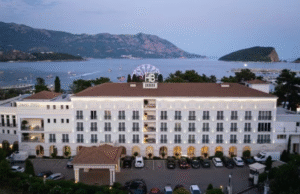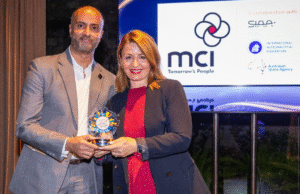Will door-to-door selling go exinct?
The following excerpt is an example of emails we receive from strangers who wish to meet with us on autumn dates:
“Next week, we will be visiting Ljubljana. We would be honoured to meet you in person for a brief meeting. We are pleased to present our exceptional MICE offering. Please let us know what time and date suits you best. We look forward to your reply.”
Messages like these remind me of classic door-to-door sales tactics. Although I am not an advocate of this approach, it continues to persist even as our communication becomes increasingly digital.
At the same time, such convincing, charming salesmen often soften me up until I accept the meeting. Sales takes many forms and channels, yet door-to-door selling might be one of the most demanding, if not the most. Hence, I commonly reply positively to such requests – out of empathy and not real interest, that is. The question arises, though, when will such forms of selling go extinct? To make it sound more up-to-date, some refer to it as salles cales. It sounds hip and cool, but in reality, it still closely resembles physical door-to-door selling, if in the digital environment.
In my opinion, a slew of other B2B tactics are more effective today, not to mention the ultimate aide-de-camp, AI. The world of sales is fast-changing, yet its essence remains unchanged: personal touch, understanding needs and demands, and the capacity to generate trust. In other words, salesmen will continue knocking on our doors. The only difference is the doors: they might change from dark wood to digital gates.
Then I started to go into the details and calculations:
- Suppose two coworkers head on a three-day business trip to Ljubljana from Belgrade. They will spend one day on the road, leaving them two full business days to make meetings.
- The direct costs of such an endeavour amount to approximately 970 EUR per person (including accommodation, travel expenses to Ljubljana and back, and food and beverage costs). If the business trip is more lavish, the direct costs can easily amount to 1,500 EUR per person.
- Here, we are discussing only direct, measurable costs without mentioning the cost of staying out of the office for three days. European and regional comparisons of typical sales teams have shown that they supposedly help companies earn between 250 and 350 EUR per day. Thus, we can estimate that, by being out of the office, each sales member could potentially cost the company between 750 and 1050 EUR for a three-day business trip. In a dream world (high margins, intensive work with top clients), the potential revenue loss could amount to 1,200 EUR per person.
- The gross economic effect of going on a business trip thus amounts to between 1,700 and 2,400 EUR per person. Based on this data, we can assess the cost-effectiveness of such business endeavours.
If we give the two sales team representatives the benefit of the doubt and suppose they manage to meet with 10 clients in two days, the cost per meeting is between 170 and 240 EUR. This is, of course, not an insignificant amount, especially if the conversion is not ensured and if some meetings do not yield tangible results.

A gramophone in an epoch of streaming
Beyond the financial aspect, we must consider another facet of door-to-door sales: the sales representatives are often overwhelmed. Such “field work” requires meticulous preparation, adapting schedules, days of travelling, and spending energy on communication, which can lead to high stress levels and low work efficiency.
Not to mention that event organising is an incredibly niche and abstract product that is nearly impossible to categorise, standardise, or even define. This factor makes sales even more nebulous, particularly when the sales representative is addressing a member of an event agency or company who is not directly involved in the final decision-making. In such cases, the physical presence of a sales representative becomes an even more risky investment of time and funds.
It seems that door-to-door sales in 2025 resemble a gramophone in an epoch of streaming – nostalgic and charming yet economically ineffective.
It is unsurprising to learn that most providers prefer to take a shortcut. In recent years, these have been mushrooming – from regional MICE trade shows to specialised B2B events. Compared to door-to-door sales, these events offer one key advantage: even the smallest, insignificant table-top events ensure a certain number of meetings and potential business leads. Clients and sales representatives thus have an overview of their effectiveness and gain insights into their results.
The facts and figures of such events show the following picture: an average trade show guarantees between 26 and 45 meetings over the course of two days. On average, this amounts to 36 meetings.
Supposing that the direct costs of a business trip (travel and accommodation costs, daily allowance, and other costs) amount to 1,700 to 2,400 EUR per person, and that the event fee usually costs between 2,000 and 3,000 EUR, the joint cost of attending such an event amounts to between 3,700 and 5,400 EUR or an average of 4,550 EUR.
Hence, if a sales representative completes the aforementioned 36 meetings at an event, the cost per contact amounts to approximately 126 EUR. Attending a trade show is thus 35% to 90% more cost-effective, given the number of newly acquired contacts. Moreover, it offers a higher concentration of relevant interlocutors and fewer logistical losses
Yet, the biggest difference compared to classic sales trips is as follows:
- Instead of hosting 16 random meetings in two days, you can conduct 35 to 40 appointed meetings with pre-verified buyers who often seek an immediate solution for their business.
- The psychological effect is vastly different: at such trade shows, you don’t sell, but establish business connections in an environment where everyone breathes the same air, follows the same trends, and seeks similar solutions.

B2B trade shows remain relevant
In other words, you invest the same amount of time, energy, and money, but with much more certainty that every business will drive concrete business. In this light, the results of the annual Kongres Barometer 2025 research are unsurprising. 265 event organisers confirmed that B2B events and trade shows are still a key element of their sales funnel.
A whopping 90.8% of respondees believe trade shows will remain a key sales platform (up by 10.5% compared to 2024).
These are the answers of the respondees to the following question: Will attending B2B events and trade shows remain a key part of your sales activities in 2025?
| 2025 | 2024 |
| 90.8% Yes | 80.3% Yes |
| 4.6% No, their importance will only increase | 11.8% I am not sure |
| 1.5% No, their importance will go down | 7.9% No |
| 3.1% I am not sure |
The results for 2025 reflect an increased trust in the power of B2B trade shows. A whopping 90.8% of respondees believe trade shows will remain a key sales platform (up by 10.5% compared to 2024). Add to that the second option, “their importance will only increase” (4.6%), and the percentage of event organisers with positive sentiment about B2B events rises to a staggering 95.4%. The percentage of undecided has dropped to 3.1% (down by 8.7%), while the percentage of those who believe B2B trade shows will become irrelevant has dropped to just 1.5%.
Event organisers see B2B trade shows as an increasingly important and unmissable part of the sales process. Their role will not be diminished, but only reaffirmed as a reliable source of quality contacts, structured meetings, and long-term business connections. However, as in every matter, one has to separate the wheat from the chaff. Trade shows that have tradition, credible references, and a quality database have taken on the role of field aquisitors. They do the work of the latter much more effectively, sustainably, and incomparably faster. Above all, they work as curators to select the right people, create the right connections, and facilitate natural, organic business.
The answer to the question in the title, “Selling from door to door in 2025?” is therefore straightforward: No, thank you. I prefer to go to the market where the doors are already wide open.
| COMPARISON | SALES CALLS | TRADE SHOWS |
| Duration | 2 days | 2 days |
| Average number of meetings | 10 | 36 |
| Total cost | 1,700 to 2,400 EUR (avg. 2,050 EUR) | 3,700 to 5,400 EUR (avg. 4,550 EUR) |
| Cost per meeting | 205 EUR | 126 EUR |
| Efficiency | Low efficiency, uncertain conversion | Concentrated target audience and stronger conversion potential |
| Added value | Individual outreach | Networking, visibility and qualified leads |
| Cost effectiveness | Baseline | 35 – 90% more effective |
N.B. We will discuss similar topics from sales and marketing at future Conventa Trend Bars. You can mark your calendars for the upcoming editions:
- 30 October 2025 | 14:30–16:00
- 6 November 2025 | 09:00–10:30
- 24 November 2025 | 14:30–16:00
- 11 December 2025 | 09:00–10:30
- 18 December 2025 | 14:30–16:00
Find out more at the following link: https://conventa.si/news/conventa-trend-bar-what-works-in-mice-marketing-and-why/.














